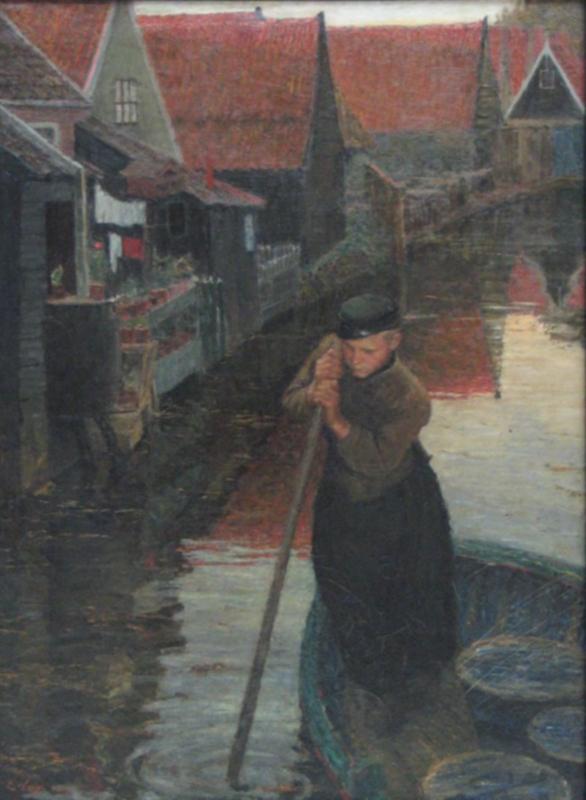Description:
Description: Émile Auguste Wéry (1868 – 1935) was a French artist who completed the Paris Académie Julian. For years he was friends with Henri Matisse, with whom in the 1890s they occupied neighboring studios in Paris. He regularly exhibited his works in the Salons Sociéte des Artistes Français, for which he was awarded. He created in the naturalism trend, inspired by Impressionism. He mainly portrayed Breton views.*
The artist, in addition to painting Breton themes, for which he was famous, also captured genre scenes taking place in Dutch towns. The painting shows a characteristic Dutch landscape canal. The thoughtful figure in the boat reminds of the monotony and grayness of everyday life, which is brightened by nature. The work’s theme fits into the trend of looking for harmony with nature that appeared at the turn of the 19th and 20th centuries.
Description of the painting:
Canal in Edam” shows a fragment of the view of the Dutch town. Edam was a port city, founded in the 12th century. Since the Middle Ages, cheese was made there in the form of rounds covered with wax, which was sold under the name Edammer. Cheeses were supplied to the popular market in the city through numerous canals. Edam experienced particular prosperity in the 17th century, when, thanks to the connection with the Zuiderzee Bay, cheeses were exported to every corner of Europe. Despite the developed trade, the town retained its charming look, which is captured on canvas. In the foreground we see a young man on the bow of a boat with a long oar that he pushes off the bottom of the canal. The second plane is occupied by buildings set up to the left bank and the mirror of the water in which they are reflected. The courtyard of the first of the houses emphasizes the utilitarian character of the canal. Further, a compact, almost identical line of successive houses is shown, with wooden walls and red double-pitched roofs.
The composition of the painting is based on the channel’s trend – a diagonal running from the lower left corner of the canvas. The viewer, looking at the scene, is as if invited to cross the frame and look into the depths of the sea, just like the thoughtful youth. In his boat circles resembling the famous heart shape are visible. The series of similar buildings suggests us that behind the bend that ends the right edge of the painting a similar landscape can be found. The eye of the viewer is drawn to the water mirror, in which the bright sky is reflected, giving it an almost silver glow. Thanks to it, the grayness of everyday life is brightened.


